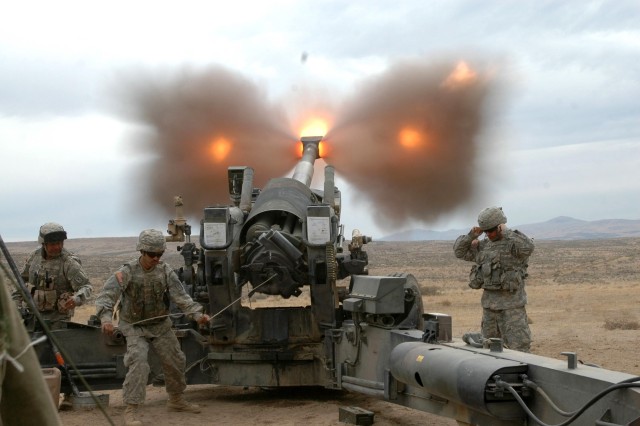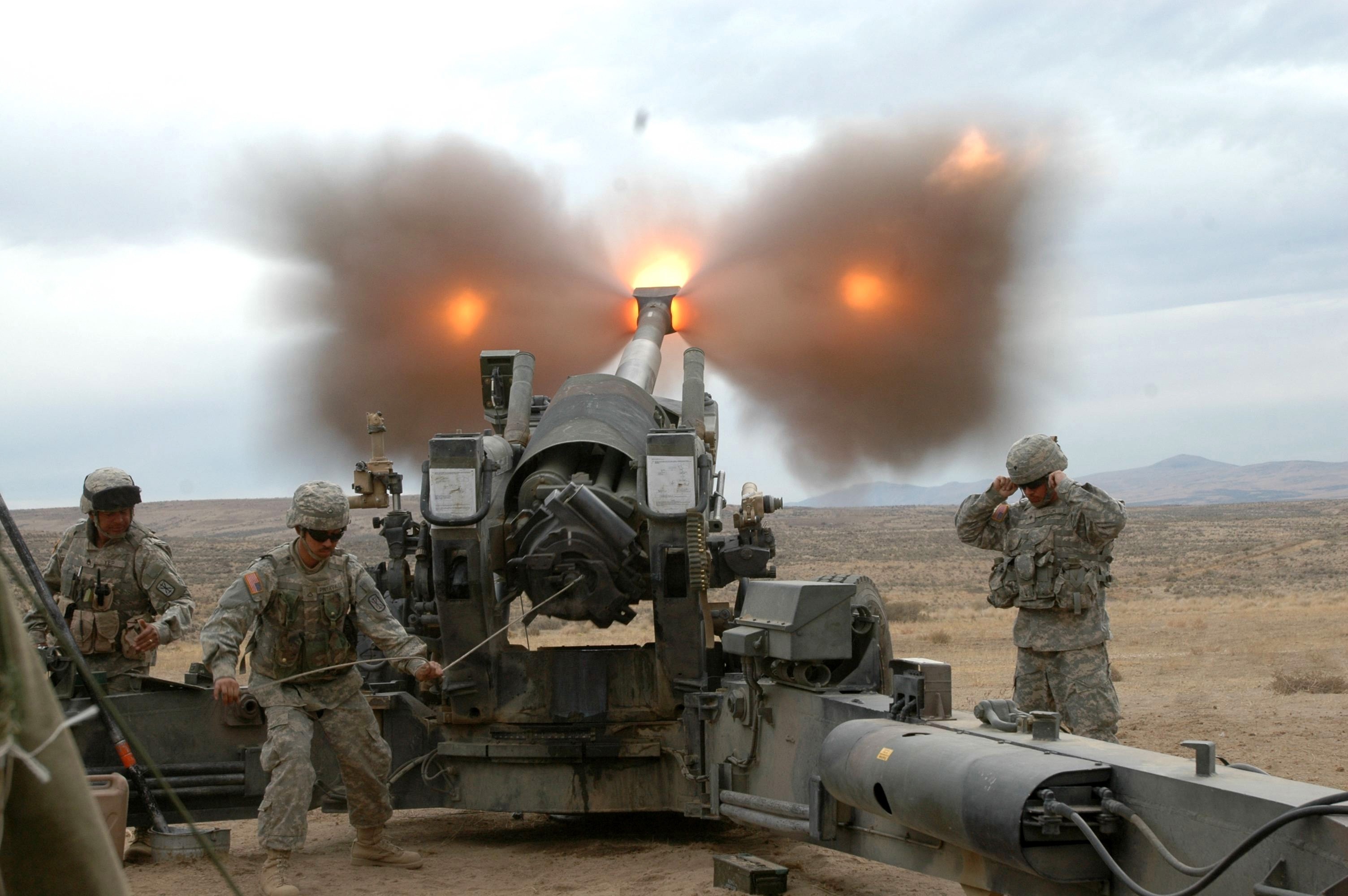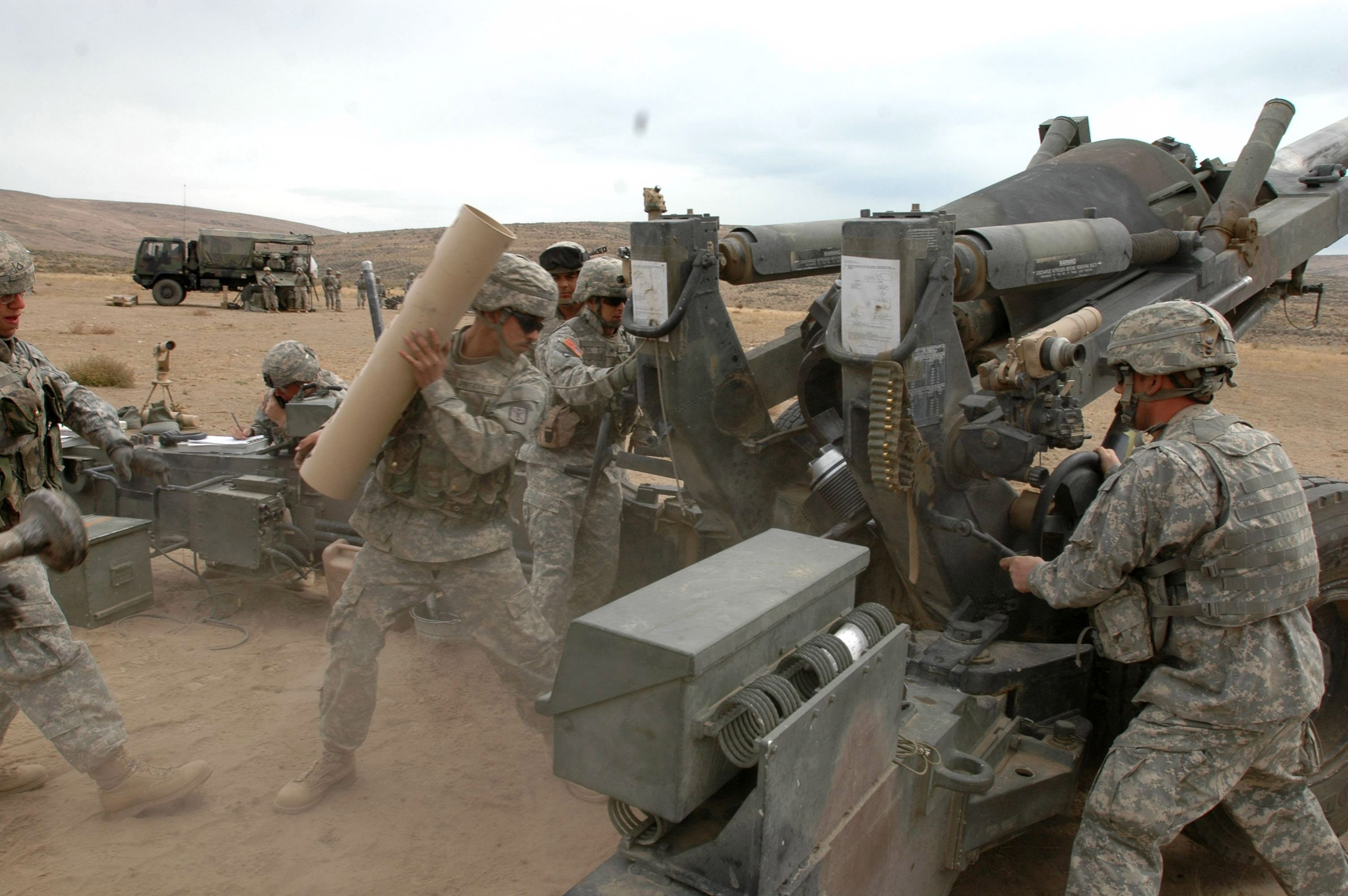FORT LEWIS, Wash. - Units from Fort Lewis' newest brigade, the 17th Fires Brigade, added an element of realism to 1st Battalion, 23rd Infantry Regiment's live-fire exercise at Yakima Training Center.
The three firing batteries of 1st Battalion, 377th Field Artillery, along with a meteorological team from F Target Acquisition Battery and a number of support Soldiers, traveled to Yakima to provide support during live-fire training conducted by the Stryker brigade. The 5th Brigade is preparing for deployment to Southwest Asia in early 2009.
Sergeant 1st Class Chatchai Underwood, A Battery first sergeant, said each battery spent about a week out at the training center to support the maneuvers of the infantrymen.
"Our (part of the) mission was simple, because we do it all the time. We provided close fire support as the infantry made their way into the mock city," Underwood said.
For safety and training limitations, the fire sections made some fire-direction adjustments.
"(Even though) the forward observers called for fire on the city, we placed rounds in the impact area - the safety box," Underwood said.
He explained that indirect fire support teams, also known as FISTERs, requested the artillery rounds directly strike the city. However, the fire-direction control sections adjusted so that rounds landed in the impact area, ensuring the safety of the dismounted infantrymen and avoiding destruction caused by placing rounds in the training site.
"The combined-arms training is more than just calling for fire support; it is a learning process for the FISTERs and the fire control sections," said 1st Sgt. Tony Ontiveros, Charlie Battery first sergeant. "It incorporates all the steps from the sensor to shooter and the effective and timely delivery of fires."
Ontiveros added that when Soldiers were not providing fire support for Stryker Soldiers, they seized the time in the field to certify fire sections chiefs and practice crew drills as well as practice Warrior Tasks and drills that are vital during deployments.
Captain Daniel Von Benken, Charlie Battery commander, said participation in this complex exercise was a great opportunity for his red legs.
"The (5th Bde.) coordinated close air support, Apache helicopter support, artillery and their own mortar teams for a big live-fire exercise at Yakima," Von Benken said.
"This gave us the opportunity to rehearse drills such as preparatory fires, call for fire execution, and provide fire support as well as an opportunity to work with our support elements, such as cooks, meteorological teams and medics."
Von Benken said the successful culmination of the live-fire exercise demonstrated more than one branch's success.
"It speaks a lot of their Soldiers, it speaks a lot about FISTERs and our Soldiers. We proved to the Stryker brigade that (the field artillery) could neutralize an objective and build on their confidence in working in a combined environment," Von Benken said.
The almost silent partner in the big-boom team was the brigade's field artillery meteorological section. The four-man team provided FDCs with meteorological data used to correct the flight of projectiles to the targets.
During this live-fire exercise, the meteorological team was co-located with the FDCs.
"It was a great idea to be so close to the gun line," Sgt. Manuel Jose Romo, meteorological section chief said. "It was not only good to be close, but it was good training to see first-hand how they used our data to determine fire direction."
Underwood said the combined-arms training was more than just a great opportunity for the Stryker brigade forward observers to use their skills; it also gave the batteries a chance to identify strengths and address maintenance issues.
He added that sections realized the importance of maintaining their equipment.
"They saw first-hand that when equipment breaks down, it results in a loss of combat power," he said.
Underwood explained that one of the howitzers went down during training, but the contact team was able to make repairs and the section was able to get back into the fight.
In the battery after-action reviews, 17th Fires Bde. Soldiers told leaders that they look forward to any opportunity to keep up their skills and fire. Von Benken said the training gave leaders a real opportunity to evaluate their Soldiers' proficiency and leadership skills.
Sgt. 1st Class Samantha M. Stryker serves with 17th Fires Brigade. This story was first published in Fort Lewis' Northwest Guardian.






Social Sharing